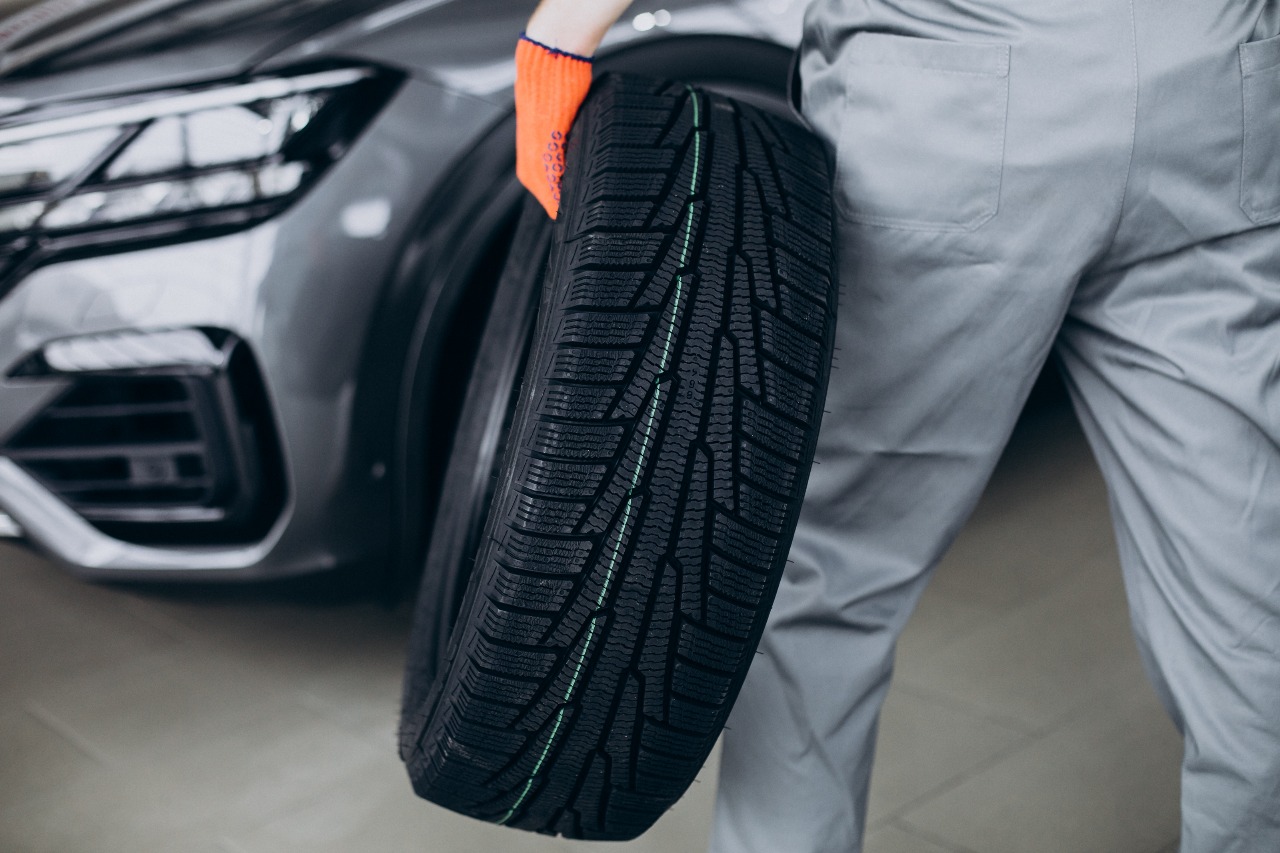Disclaimer: Images (s) shown are for illustrative purposes only. Actual product specifications, including tyre size and design, may vary.
Every journey begins with trust—between you and the four tyres that carry you forward. While tyres quietly take on potholes, sharp turns, and unpredictable weather, they rarely get the attention they deserve. The truth is, tyre health directly impacts safety, fuel efficiency, and overall vehicle performance. A quick inspection can prevent unexpected breakdowns and ensure a smoother, more secure drive.
We’re focusing on passenger car tyres, designed for everyday comfort, fuel efficiency, and reliable grip—whether you're navigating city streets or cruising on the highway.
Understanding how to check tyre condition is not just a maintenance task; it’s an essential responsibility for every car owner. Here we’re not just listing steps. We’re decoding the language your tyres speak, through tread wear, pressure, and subtle warning signs, so you can drive with confidence, clarity, and control.
What to Look for When Inspecting Tyres

Your tyres impact everything from road grip, comfort and braking to fuel efficiency and overall safety. Let’s get into the key areas you should check. These simple visual and manual checks can help you stay ahead of potential issues and avoid unexpected breakdowns.
1. Check Tread Depth

Disclaimer: Images (s) shown are for illustrative purposes only. Actual product specifications, including tyre size and design, may vary.
Tread depth refers to the vertical measurement between the top of your tyre’s rubber and the bottom of its grooves. It plays a key role in maintaining grip on the road. One of the most crucial aspects of how to check car tyre condition is inspecting the tread depth, as it helps your tyres safely handle rain, curves, and sudden braking. Worn tyres are also susceptible to punctures and damage due to less rubber remaining to resist damage.
Tread Wear Indicator (TWI)
All Passenger car tyres and Truck and Bus tyres are moulded with Tread wear indicators with a height of 1.6mm above the base of tread grooves. Anything below this compromises traction, braking and grip, especially on wet roads.
2. Inspect for Cuts, Bulges or Cracks
Tyres endure a lot—potholes, heat, sharp objects—and all of this can lead to visible damage. Run your hand along the tyre sidewall.
Look for:
- Cuts (due to some external sharp object, potential puncture risks)
- Bulges (Caused by impact from potholes or external objects, or running the tyre under very low or zero inflation pressure can lead to ply cord breakage)
- Cracks (a sign of ageing or exposure to sunlight)
3. Look for Uneven Wear
Tyres should wear down evenly across the tread. Uneven wear may indicate:
- Improper wheel alignment & balancing
- Incorrect tyre pressure
- Improper tyre rotation
What to Do:
If your tyres show signs of uneven wear or damage, it may be time to replace them. Also, ensure your wheels are aligned and balanced to avoid premature wear in the future.
Upgrading to tyres that are engineered for balanced wear, like Turanza Passenger Tyres, can significantly extend your tyre life and reduce the frequency of replacements.
4. Check Tyre Pressure
Incorrect tyre pressure affects handling, braking, comfort and fuel efficiency.
Use a calibrated pressure gauge or visit your nearest service station to ensure your tyres match the recommended PSI (find the recommended PSI for your car in the owner’s manual, driver-side door sticker, or fuel lid).
Under-inflated tyres: Reduce fuel efficiency and comfort, cause poor handling and hydroplaning, and lead to both side shoulders.
Over-inflated tyres: Reduced grip, compromises handling & grip, making the ride bumpier and less comfortable and more prone to tyre damage. Reduces contact area, compromising grip, making the ride bumpier and less comfortable and more prone to tyre damage.
It is recommended to check car tyre pressure once every two weeks or before long trips, when tyres are in cold condition (i.e., at ambient temperature), for an accurate reading.
5. Don’t Forget the Spare
Many drivers focus only on the four tyres they use daily and forget to check the spare.
Every month, inspect your spare tyres for:
- Adequate pressure
- No visible damage
- Sufficient tread
In the event of a puncture, your spare becomes your immediate backup. If the damaged tyre can't be repaired right away or isn't in good condition, having a well-maintained spare ensures you're not caught off guard. Regular checks help you stay prepared for unpredictable road conditions and unexpected situations.
6. Know the Tyre’s Age
Even if your tyres look fine, rubber degrades over time so it is recommended to get it checked by professionals for any signs of ageing, wear, damage, etc.
If your inspection reveals it’s time for a new set, consider upgrading to Turanza Passenger car Tyres, engineered for comfort, performance and overall safety.
Drive With Confidence—It Starts With Your Tyres
Learning how to check tyre condition doesn’t require a mechanic’s touch. With these simple steps, you can stay ahead of potential problems and drive with peace of mind. Tyres in good condition mean better control, enhanced safety, and reduced fuel consumption. Make tyre care a regular part of your vehicle maintenance routine. Your journey deserves the best; make every drive smoother, quieter, and safer with Turanza tyres.
Disclaimer: The information provided is for general guidance only. The author assumes no responsibility for errors or omissions, or for any consequences resulting from the use of this information.
